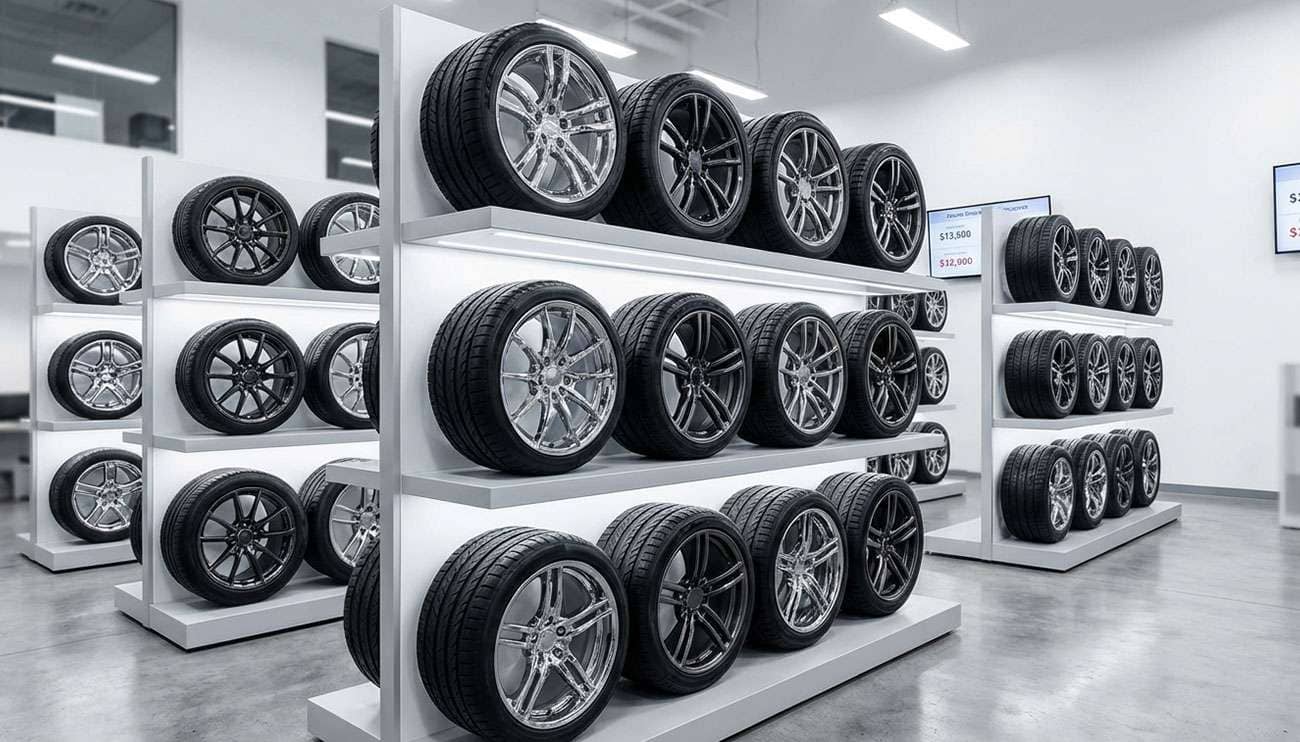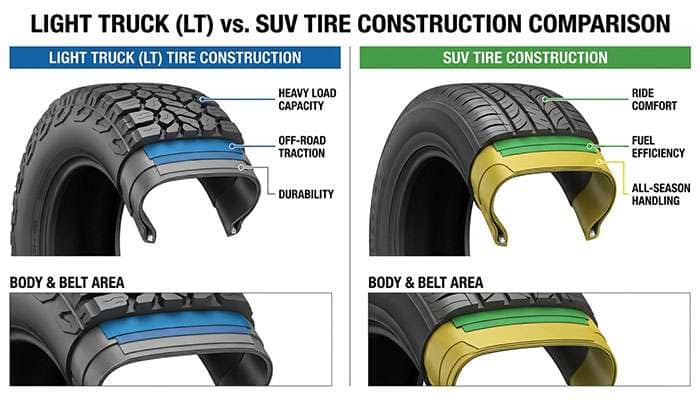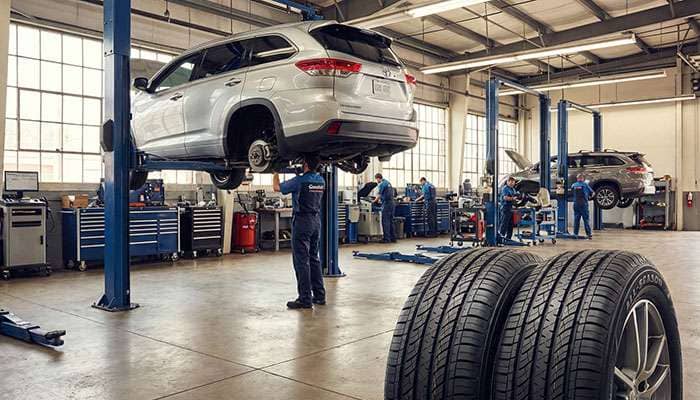
Are wheel and tire packages cheaper? When it comes to upgrading your vehicle's wheels and tires, this question can save you hundreds of dollars. We see it every day - vehicle owners making one of their biggest automotive investments without understanding the real cost differences between buying separately versus complete packages.
The numbers tell the story. Three out of four owners make costly selection mistakes that end up costing an average of $800 to fix. We understand why this happens - with budget tires starting around $50-$150 each and premium options like Michelin reaching $300-$1,000 per tire, the pricing landscape gets complicated fast.
Here's where packages make a real difference. A complete set of 35-inch Super Swampers with Weld wheels delivers for $1,977.08 through mail-order sources. Compare that to a BFG/Eagle Alloys package at just $1,228.96 - that's significant savings right there. These packages include mounting, balancing, lugs, centers, and valves. Those services alone would add substantial costs if purchased separately.
With tire prices expected to climb in 2025 due to rising raw material costs, understanding how to save money through wheel and tire combos becomes even more important. Smart buyers who choose complete packages avoid the markup maze and get better value for their investment.

When shopping for new wheels and tires, understanding exactly what you're getting matters. Wheel and tire packages offer more than just convenience - they deliver complete solutions designed for your specific vehicle needs.
A wheel and tire combo brings together both components as a matched set. These aren't random pairings - each combination is specifically designed to ensure perfect compatibility between the tire and wheel. The result? You avoid the headaches that come from trying to match components yourself.
The real advantage shows up in the details. When you receive a wheel and tire package, the tires arrive already mounted and balanced on the wheels with valve stems installed. This means you can bolt them directly onto your vehicle using basic tools - typically just a jack and lug wrench.
Most wheel and tire packages include everything you need for installation:
Four matched tires and wheels sized for your vehicle
Professional mounting and Hunter Road Force™ balancing using precision equipment
Installation hardware including lug nuts and center caps (when applicable)
Valve stems properly installed
TPMS sensors when purchased as part of the complete package
We include these services at no additional cost. Compare this to purchasing separately - professional mounting alone runs $37.00 to $55.00 per tire. Premium services like Hunter Road Force™ balancing add even more to local shop costs.
Keep in mind that specific components vary based on your vehicle and wheel selection. Some applications use original equipment hardware or offer center caps as optional accessories at additional cost.
Wheel and tire packages solve five key problems that vehicle owners face. First, they guarantee compatibility - the tires and wheels match perfectly in size, style, and performance characteristics. This compatibility affects both appearance and safety.
Second, packages eliminate the selection complexity. Instead of researching tire specifications and wheel fitment separately, you make one decision and receive everything ready to install. This saves considerable time and reduces potential mistakes.
Safety represents the third major advantage. Mismatched wheels and tires create uneven wear patterns, premature failures, and potentially dangerous blowouts. Professional package assembly eliminates these risks.
Performance improvement comes fourth. Properly matched components work together as a system. Lighter alloy wheels can improve fuel economy, while forged wheels provide extra durability for demanding conditions.
Finally, the economics make sense. Wheel and tire packages cost less than buying identical components separately. Most retailers add value through free shipping and installation services when you purchase complete packages.

Selecting the right wheel and tire package means understanding your vehicle's specific requirements. Wheels and tires aren't universal accessories - they must precisely match your vehicle's specifications for safety, performance, and longevity.
Weight makes all the difference when choosing between car and SUV tires. A typical midsize sedan weighs around 3,200 pounds, while a full-size SUV can exceed 5,000 pounds before adding passengers or cargo. This substantial weight difference creates unique tire demands.
SUV tires feature stronger construction and stiffer sidewalls to handle the additional weight and higher center of gravity. These reinforced sidewalls maintain stability during cornering and prevent excessive flexing under load. Putting passenger car tires on an SUV creates dangerous situations - particularly during emergency stops on wet pavement where sedan tires struggle to maintain traction under the heavier vehicle.
The reverse creates problems too. SUV tires use harder rubber compounds that provide less cornering grip and braking control than the softer compounds in passenger car tires. This mismatch makes your sedan feel sluggish and compromises handling characteristics.
Every tire carries a load rating that defines its maximum weight capacity. Vehicle weight varies significantly by class - cars typically range from 2,700 to 3,500 pounds, SUVs from 3,500 to 5,500 pounds, and light trucks from 4,500 to 6,000 pounds. Adding passengers or cargo increases these weights considerably.
Exceeding load ratings creates real dangers. An underrated tire flexes excessively under weight, generating excessive heat that breaks down the tire's internal structure. This deterioration leads to tread separation and potentially catastrophic blowouts at highway speeds.
Most vehicle manufacturers specify load ratings in your owner's manual or on the driver's door jamb sticker. Using tires below these specifications voids warranties and creates liability issues if damage or injury occurs. Professional package sellers match load ratings to your vehicle, eliminating this guesswork.
Performance tires deliver superior grip, precise handling, and high-speed capabilities. These characteristics make them ideal for aggressive driving and track use. However, performance tires wear faster and provide less comfort than all-season alternatives. They also perform poorly in cold temperatures below 45°F.
All-season tires balance multiple demands - reasonable wet and dry traction, acceptable winter performance (though not on ice or deep snow), longer tread life, and quieter operation. These compromises make all-season tires practical for daily driving in most climates.
Your choice depends on three factors. First, your climate - if winter brings regular snow and ice, consider dedicated winter tires rather than relying on all-season capabilities. Second, your driving style - enthusiastic drivers benefit from performance tire responsiveness. Third, your budget - performance tires require more frequent replacement.

Understanding real-world pricing helps you make informed decisions about wheel and tire packages. Market data reveals significant differences between buying components separately versus purchasing complete packages.
The math is straightforward. Budget tire packages start around $1,100 for a complete four-wheel setup, while separate purchases of identical components run $200-$400 more. This 10-29% price advantage represents real savings on your automotive investment.
Package savings extend beyond the sticker price. Mounting and balancing services cost $37.00-$55.00 per tire at most shops. Add valve stems at $5-$10 each, plus TPMS sensors if needed, and separate purchases quickly add $150-$250 in service costs. Packages typically include these services at no additional charge.
Individual component pricing varies widely. Budget tires run $50-$150 each, mid-range options $150-$300, and premium brands like Michelin reach $300-$1,000 per tire. Wheels follow similar patterns - steel wheels start around $50-$100 each, basic alloys $100-$200, and premium forged wheels $300-$1,000 or more.
Five factors determine final package costs. First, tire size matters significantly. Larger diameter tires and low-profile designs cost substantially more than standard sizes. A 17-inch tire typically costs 20-30% less than an equivalent 20-inch tire.
Second, wheel construction impacts pricing. Cast aluminum wheels provide the most economical option, while forged wheels command premium prices due to superior strength and lighter weight. Steel wheels cost less initially but offer limited style options.
Third, brand selection creates major price differences. Premium brands like Michelin, Continental, and Pirelli charge more for their reputation and performance capabilities. Budget brands deliver adequate performance at lower costs but may sacrifice longevity or specialized capabilities.
Fourth, performance specifications affect pricing. High-performance summer tires and specialized off-road tires cost more than standard all-season options. The specialized compounds and construction methods required for these applications increase manufacturing costs.
Fifth, included services and warranties add value. Packages with comprehensive road hazard protection, free lifetime rotation, and extended warranties cost more upfront but potentially save money over the tire's lifespan.
Installation fees represent the most common surprise cost. While many online retailers advertise free shipping, local installation still requires payment to a shop near you. Budget $80-$200 for professional installation of a complete package.
TPMS service deserves careful attention. Vehicles manufactured after 2007 require functioning TPMS sensors. New sensors cost $40-$100 each, and programming fees add another $20-$50 per sensor. Some packages include these costs, others charge separately.
Disposal fees for your old tires and wheels range from $5-$10 per tire. Many shops charge this fee automatically, though some package deals include disposal in the total price.
Alignment services become necessary when changing wheel or tire sizes. Proper alignment prevents premature wear and ensures optimal handling. Professional alignment costs $75-$200 depending on your vehicle and whether it requires two-wheel or four-wheel alignment.
Tax and shipping calculations sometimes exclude these charges from advertised prices. Verify the final out-the-door cost before committing to any package purchase.

Finding quality wheel and tire packages at competitive prices requires knowing where to look and when to buy. The right shopping strategy saves hundreds of dollars while ensuring you get components that match your vehicle's needs.
Online retailers consistently offer lower prices than local shops. The reason is simple - lower overhead costs. Online sellers don't maintain expensive showroom space or large local inventories. These savings translate directly to customer pricing, with online packages typically costing 15-25% less than identical local offerings.
However, online purchases create installation challenges. You'll need to arrange mounting and balancing at a local shop, which adds $80-$200 to your total cost. Some online retailers partner with national installation networks, offering appointment scheduling and guaranteed pricing.
Local shops provide immediate inspection and professional advice. Experienced staff can identify vehicle-specific fitment issues before purchase. This expertise prevents costly mistakes, especially for vehicles with modified suspensions or unusual specifications.
The best approach combines both channels. Research packages online to understand pricing and options. Then visit local retailers with this knowledge, using their expertise while negotiating competitive pricing based on your online research.
Seasonal timing dramatically impacts package pricing. Three periods offer the best deals. First, spring clearance sales in April and May move remaining winter inventory. Retailers discount packages to make room for summer stock, creating opportunities for all-season buyers.
Second, fall promotions in September and October prepare for winter tire season. Manufacturers offer rebates ranging from $50 to $250 on complete packages. These promotions typically run for 4-6 weeks, so timing matters.
Third, year-end clearance from late November through December clears old model-year inventory. Black Friday and Cyber Monday sales produce genuine savings, with some retailers offering 20-30% off select packages.
Shopping when you still have 4/32" tread remaining provides flexibility. This approach lets you wait for ideal pricing rather than purchasing under pressure when tires reach minimum safe depths.
Start with fitment verification. Confirm the package matches your vehicle's year, make, model, and trim level. Ask specifically about any required modifications or compatibility issues with your vehicle's suspension or brake systems.
Understand the complete cost structure. Request itemized pricing showing tire costs, wheel costs, mounting, balancing, valve stems, TPMS compatibility, and any additional fees. This transparency prevents surprise charges at checkout.
Clarify warranty coverage. Ask about tire treadwear warranties, road hazard protection, and wheel finish warranties. Determine whether warranty service requires returning to the original retailer or if any authorized dealer provides coverage.
Verify return and exchange policies. Quality retailers offer satisfaction guarantees allowing returns within 30-60 days if you're not satisfied with ride quality or appearance. Understand any restocking fees or return shipping charges before committing.
Confirm installation scheduling. If buying online, verify that local installation partners have availability within your required timeframe. Some partnerships experience delays during peak seasons, potentially leaving you without transportation.

Professional installation of wheel and tire packages delivers far more than convenience - it protects your investment and ensures safe operation. Improper installation creates dangerous driving conditions and voids manufacturer warranties. Professional technicians mount tires according to exact manufacturer specifications, which directly improves vehicle stability and responsiveness. Many tire manufacturers require professional installation to maintain warranty validity, making this step essential for protecting your purchase.
Professional mounting includes precision balancing that eliminates vibrations capable of damaging your vehicle's suspension system. This initial setup prevents uneven wear patterns that develop when wheels aren't properly balanced. Professional installation services inspect your vehicle's suspension and alignment components, catching underlying issues before they compromise tire performance.
Maximize your wheel and tire package lifespan with these essential practices:
Check tire pressure monthly - tires lose approximately 1 PSI every month
Rotate tires every 6,000-8,000 miles to equalize treadwear
Balance wheels during tire rotation
Schedule alignment checks twice yearly
Underinflated tires flex excessively, creating dangerous operating temperatures and potential structural damage. Proper inflation improves fuel efficiency by up to 3.3% while extending tire life significantly.
Tire warranties typically last 4-6 years from purchase date or until tread wears out. Materials and workmanship warranties cover manufacturing defects, while treadwear warranties guarantee specific mileage. Road hazard protection plans cover damage from potholes, debris, and punctures, often with zero deductible.
Understanding warranty terms before purchase ensures you get maximum protection for your investment. Look for coverage that matches your driving habits and terrain conditions.
Wheel and tire packages deliver better value than buying components separately. The evidence is clear - customers save 10-29% when choosing complete packages versus individual parts. These bundles include mounting, balancing, and installation hardware that would otherwise add $150-$200 to your total cost.
We've seen the convenience factor make a real difference for our customers. Rather than hunting for compatible wheels and tires separately, then finding a shop for mounting, packages arrive ready to install with guaranteed compatibility. This compatibility means better performance, improved safety, and longer component life.
Smart shopping amplifies these savings even more. Buying during off-season periods, using manufacturer rebates, and shopping online versus local stores can reduce costs significantly. Online retailers offer competitive advantages through lower overhead costs - savings that get passed directly to you.
Safety remains the top priority regardless of price. Professional installation ensures proper torque specifications, while choosing packages with appropriate load ratings prevents dangerous failures. The best deals balance cost with quality rather than cutting corners on safety.
Wheel and tire packages make sense for most vehicle owners. Separate purchases might work if your current wheels are in excellent condition, but the overall value proposition of packages is compelling. The upfront investment pays off through convenience, compatibility, and warranty coverage.
Our recommendation is straightforward: for drivers looking to replace both wheels and tires, packages represent the smartest financial decision while ensuring proper fit and function for your vehicle. Ready to upgrade your ride? Browse our wheel and tire packages and experience the perfect blend of savings, performance, and peace of mind.
Wheel and tire packages consistently deliver better value than buying components separately, with savings averaging 10-29% plus included services worth $150-$200.
• Packages save 10-29% compared to separate purchases while including free mounting, balancing, and installation hardware that would otherwise cost $150-$200 extra.
• Online retailers offer the best deals due to lower overhead costs, with seasonal sales and manufacturer rebates providing additional $50-$250 in savings opportunities.
• Professional installation is crucial for safety and warranty protection - improper mounting can void warranties and create dangerous driving conditions that compromise vehicle stability.
• Proper vehicle matching prevents costly mistakes - using incorrect load ratings or tire types can lead to premature failure, with 75% of owners making selection errors costing $800 to fix.
• Strategic timing maximizes savings potential - shopping during off-seasons with 4/32" tread remaining allows flexibility to find the best deals without pressure from immediate replacement needs.
The bottom line: wheel and tire packages offer guaranteed compatibility, professional services, and substantial cost savings that make them the smart choice for most vehicle owners replacing both components.
Yes, wheel and tire packages are typically 10-29% cheaper than purchasing components separately. They also often include free mounting, balancing, and installation hardware, saving an additional $150-$200 in services.
Online retailers generally offer the best prices due to lower overhead costs. Look for seasonal sales and manufacturer rebates, which can provide additional savings of $50-$250. Shopping during off-seasons when you still have adequate tread left (around 4/32") allows you to find the best deals without pressure.
Professional installation is crucial for safety and to maintain warranty validity. Improper mounting can create dangerous driving conditions and void manufacturer warranties. Professionals ensure proper torque specifications and often include inspection of suspension and alignment components.
Consider your vehicle's specific needs, including weight, load ratings, and intended use. SUVs require different tires than sedans due to weight differences. Always match the package to your vehicle's specifications to ensure safety and optimal performance.
Check tire pressure monthly, as tires can lose about 1 PSI per month. Rotate tires every 6,000-8,000 miles to equalize wear. Get wheels balanced when rotating tires, and schedule alignment checks twice yearly. Proper inflation can improve fuel efficiency by up to 3.3%.